Between 1956’s Silence and Revisionist Memory
Our project sparks from further research on some of the graves located in the Kerepesi Cemetery, most specifically some of those behind the (in)famous Workers Movement Pantheon, in the cemetery plot known as the “1956 Heroes” plot. In this process, we stumbled upon a few names such as that of Erika Szeles, a teenager enmeshed in the events of late October and early November in 1956 as a student, an armed fighter, and a volunteer nurse attending to the wounded and distributing foodstuffs. Perhaps her story is known to us because of a set of photographs taken in 1956, replicated below. As our research deepened, we were inevitably drawn to the discursive and practical repercussions that stem from the established erasure about the events of 1956 in the immediate three decades after the events. We also recognize that from 1989 onwards, and more intensely since the 50th anniversary of the revolution as well as since FIDESZ's government, an interesting and intense “recovery” of historical narratives regarding 1956 has taken place. There is ample secondary literature on this, focusing on the way that 1848, 1956, and 1989 have been discursively framed around a continuity of the Hungarian drive for national independence. Most poignantly, much of the literature sheds light on how the anti-communist and nationalist narrative has been pushed for, especially in the years 2006 and 2016, when important commemorations about the 1956 events took place. It was during 2016, for example, that the image of Erika Szeles appeared on billboards across Budapest and the country.
In this way, from an incursion into specific lives and their relation to 1956's Hungary, remembered in the space of the Kerepesi cemetery, we then transitioned to the contentious manner in which some of these histories are highlighted in public, more often than not with loaded political intentions. Having these aspects in mind, we delved into archives that could tell us more regarding the complexity of what and who is remembered, as well as when this happens. "Indeed, most people assume that they owe a debt to their dead – this is why we have cemeteries. Far more interesting are cases in which people assume the opposite: that some ancestors are best left forgotten." We contend that by using oral histories, we can hear living "ghosts" of the revolution speaking to us. This should of course not be understood literally, the overarching point being that we found in oral histories a vast, diverse repository of people's involvement and experience of the revolution. We then tried to map a more general perspective of those directly involved in some way or another through the different paths, choices, and coincidences of their particular lives during the days of the revolution.
In these ways, we found motivation to undertake a creative approach in our project, creating a “choose-your-own-adventure” interactive text that loosely fits into real-life biographies, where the fictional part primarily “lures” the players/readers into the events while contextualization done through archival resources has pedagogic values and cements the grander historical narrative. Finally, our project contains too a distinct pedagogic opportunity as a relatively easy and fun digital tool for historical engagement and self-expression. Students could be presented to this project in a workshop environment, where they learn some of the conceptual issues regarding the assembly of one or several narratives, as well as how to implement and self-publish personal or collective projects using freely available tools and methods.
Bibliography
Apor, Peter. “The Eternal Body: the Birth of the Pantheon of the Labor Movement in Budapest.” East Central Europe, 31(1) (2004): 23-42.
László Ritter and Erwin A. Schmidl. The Hungarian Revolution 1956. Oxford: Osprey, 2006.
A well-rounded introduction that focuses mostly on the military aspects of the revolution, leaving little room for peaceful demonstrations and political activities.
Peter Fryer. Hungarian Tragedy. London: Dennis Dobson, 1956.
An easy to read eye-witness account of the revolution, focusing not only on Budapest but also other cities and villages in Hungary. The author is sent to Hungary as a reporter of the communist newspaper Daily Worker but got disillusioned with the Stalinist approach of his employer. This makes for a more passionate read, but as with all renegade authors one must be careful of one-sided depictions.
Endre Marossy. 1956. Fiadnak hagyd örökül. Debrecen: Tóth Könyvkereskedés és Kiadó, 2006.
A chronological overview of the revolution with documentation of commemoration sites designated to the respective victims. The rich illustration with photographs makes this recommendable even for Non-Hungarian speakers.
László Eörsi. The Hungarian Revolution of 1956. Myths and Realities. New York: Columbia University, 2006.
László Eörsi is one of the most active scholars who publishes on the Revolution 1956. This is one of the few of his works that have been translated into English. The volumes contains comprehensive insight into the live of Ilona Tóth among others, mixing detailed analyses of historical documents with entertaining speculations.
William E. Griffith. The Petofi Circle. Forum for Ferment in the Hungarian Thaw. Cambridge, Massachusetts: Massachusetts Institute of Technology, Center for International Studies, 1962.
Even though it is pretty outdated and obviously one-sided in some aspects, this still remains one of the few valuable accounts of the Petőfi Circle available in English.
Andrea Pető. “Roots of illiberal memory politics. Remembering women in the 1956 Hungarian Revolution.” In Baltic Worlds 10, no. 4 (2016): 42-53.
A relevant reading for our group and everyone who is interested in the lives of young female revolutionaries and their contradictory remembrance. It shows that their commemoration was not only neglected in most times, but also distorted in degrading the women to mere assistants to the actual, male heroes.
John Joseph Cash. “Commemoration and Contestation of the 1956 Revolution in Hungary”. In Comparative Hungarian Cultural Studies Steven, edited by Tötösy de Zepetnek and Louise O. Vasvári, 247-258. Ashland: Purdue University Press, 2014.
The article captivates with its personal view of the memory of the 1956 revolution during the protests in Budapest 50 years later. Even if this perspective of remembrance is ultimately less important in our project, it is recommended reading for anyone who would like to get to know the forerunner of the inflationary remembrance of the revolution in 2016.
István Rév. Retroactive Justice. Prehistory of Post-Communism. Stanford, CA: Stanford University Press, 2005.
The chapter “A Pantheon” was especially important for our group as it explained the many layers of remembrance at Kerepesi Cemetery and especially highlighted the obscure closeness of contradictory sites of memory.
Columbia University Research Project on Hungary Interviews with 1956 Hungarian Refugees. We mostly used the following:
"CURPH Interview 9-F with a 1956 Hungarian Refugee: 21 Years Old, Female, Law student", 1957. HU OSA 414-0-2-100; Donald and Vera Blinken Collection on Hungarian Refugees of 1956: Transcripts of Refugee Interviews; Open Society Archives at Central European University, Budapest.
"CURPH Interview 24-F with a 1956 Hungarian Refugee: 26 Years Old, Female, Hospital nurse", 1957. HU OSA 414-0-2-18; Donald and Vera Blinken Collection on Hungarian Refugees of 1956: Transcripts of Refugee Interviews; Open Society Archives at Central European University, Budapest.
"CURPH Interview 30-F with a 1956 Hungarian Refugee: 19 Years Old, Female, Nurse", 1957. HU OSA 414-0-2-25; Donald and Vera Blinken Collection on Hungarian Refugees of 1956: Transcripts of Refugee Interviews; Open Society Archives at Central European University, Budapest.
"CURPH Interview 34-F with a 1956 Hungarian Refugee: 22 Years Old, Female, Children's nurse", 1957. HU OSA 414-0-2-29; Donald and Vera Blinken Collection on Hungarian Refugees of 1956: Transcripts of Refugee Interviews; Open Society Archives at Central European University, Budapest.
"CURPH Interview 86-F with a 1956 Hungarian Refugee: 42 Years Old, Female, Nurse of a prison hospital", 1957. HU OSA 414-0-2-86; Donald and Vera Blinken Collection on Hungarian Refugees of 1956: Transcripts of Refugee Interviews; Open Society Archives at Central European University, Budapest.
"CURPH Interview 87-F with a 1956 Hungarian Refugee: 38 Years Old, Female, Student and housewife", 1957. HU OSA 414-0-2-87; Donald and Vera Blinken Collection on Hungarian Refugees of 1956: Transcripts of Refugee Interviews; Open Society Archives at Central European University, Budapest.
| Status | Prototype |
| Platforms | HTML5 |
| Release date | Feb 05, 2024 |
| Author | kerepesi |
| Genre | Interactive Fiction |
| Made with | Twine |
| Tags | 1956, Historical, hungary, Narrative, Nonlinear, Prototype, Twine |
| Asset license | Creative Commons Attribution_NonCommercial_ShareAlike v4.0 International |
| Average session | A few minutes |
| Languages | English |
| Inputs | Keyboard, Mouse, Touchscreen |
| Accessibility | High-contrast, One button |
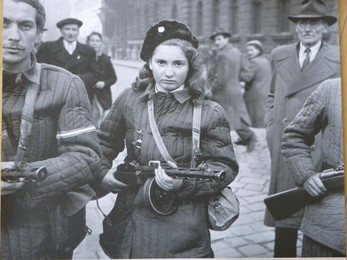

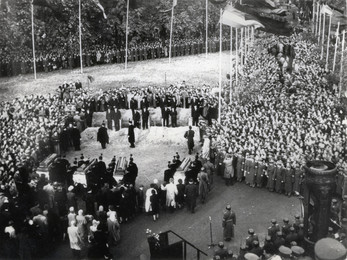
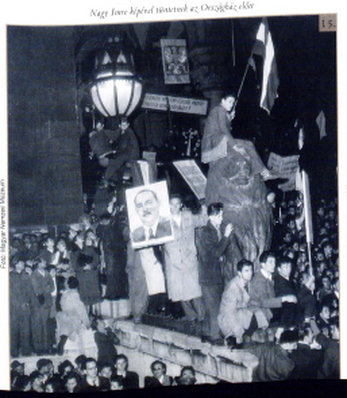
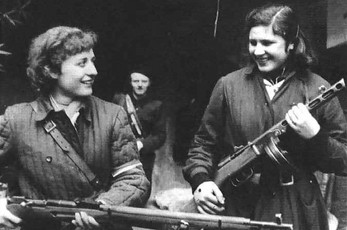
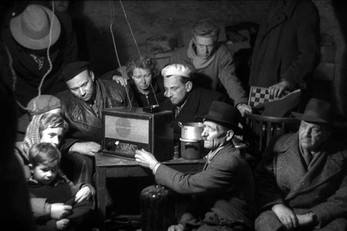
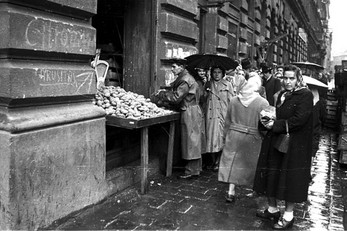
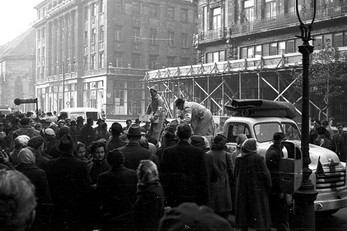
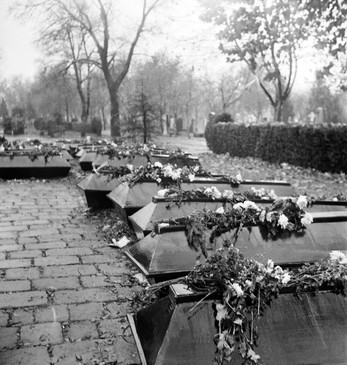
Leave a comment
Log in with itch.io to leave a comment.